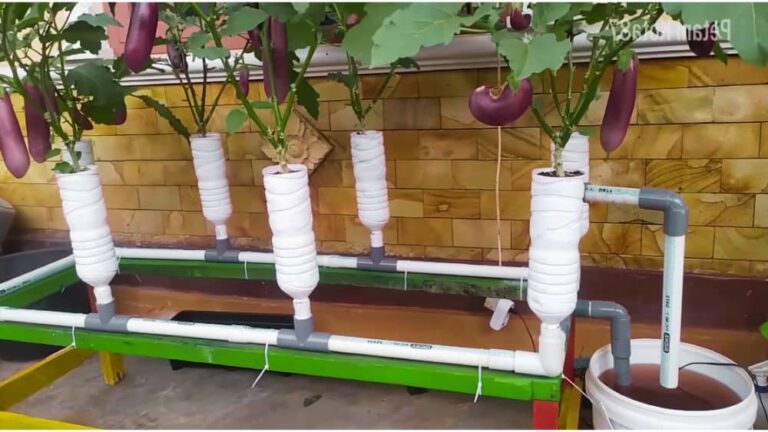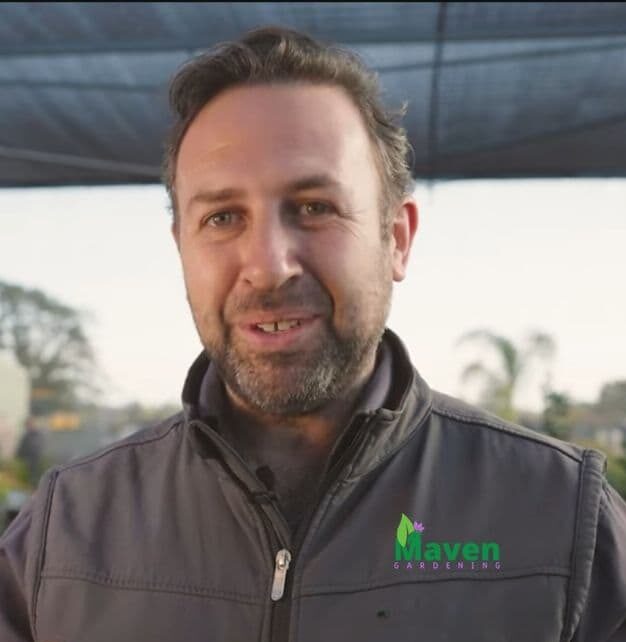Ebb and Flow Hydroponics: Efficient Gardening Method
Consider ebb-and-flow hydroponics if you’re looking for an easy, versatile, and efficient way to grow plants indoors. This system uses a pump to periodically ebb and flood a tray of plants with nutrient-rich water, imitating natural wet and dry cycles. This blog post will explore what ebb flow hydroponics offers, how it works, what you need to set it up, and some tips and tricks to optimize your results. We’ll also answer some of the most common questions about this indoor growing method.
What are the ebb and flow of hydroponics?
Ebb and flow hydroponics uses a pump connected to a timer to periodically ebb and flood a tray of plants with nutrient-rich water from a reservoir. The tray is filled with an inert growing medium, such as clay pebbles, rock wool, or coco coir. This medium supports the plants and retains moisture between cycles. The pump is usually set to run for 15 to 30 minutes several times daily, depending on the plant type and environmental conditions. When the pump is on, water flows from the reservoir to the tray, submerging the roots. When the pump is off, water drains back into the reservoir through gravity, exposing the roots to air.

Ebb & flow hydroponic systems: pros and cons
Pros of Ebb and Flood Hydroponics:
They’re simple to set up and maintain. You only need a few essential components, such as a reservoir, a tray, a pump, a timer, and a growing medium. If it has drainage holes, you can use any container or tray that fits your space and budget. Furthermore, you can also customize your system’s size and shape to suit your needs.
They’re adaptable to different plant types. You can grow various plants in an ebb-and-flow hydroponics, from leafy greens and herbs to flowers and fruits. You can also adjust the frequency and duration of flooding cycles to match different plants’ water requirements. For example, you can flood the tray more often for thirsty plants like lettuce or less frequently for drought-tolerant plants like succulents.
They use water and nutrients efficiently. Like all hydroponic methods, this system also recycles the water and nutrients the plants do not absorb during each flooding cycle. It reduces the amount of water and fertilizer you need, as well as waste. You can also monitor and adjust the pH and EC levels of the nutrient solution easily by testing the water in the reservoir.
They provide optimal oxygenation and aeration for the roots. Ebb and flood hydroponics expose the roots to water and air during each cycle, promoting healthy root growth and preventing rot. The oxygen in the air helps the roots absorb more nutrients from the water. In addition, the air gaps in the growing medium allow the roots to breathe and expand.
Cons of Ebb and Flow Hydroponics:
The Ebb and Flow system also has some drawbacks to consider.
Power failures: A submersible pump is used to control the ebb and flood cycles. Power outages or pump failures will prevent your plants from receiving nutrients.
Fluctuating pH levels: In the ebb and flow, constant recycling of nutrient solutions can make pH levels inconsistent.
Breakdowns: Just as with any mechanical setup, the ebb and flood setup is prone to malfunction. Regular maintenance can prevent this problem.
Despite some drawbacks, ebb and flow hydroponics is highly versatile and inexpensive.
What do you need to set up ebb flow hydroponics?
To set up the flood and drain system, you’ll need the following:
A reservoir:
In this container, you store the nutrient solution that feeds your plants. You can use any large container, such as a bucket, a tote, or a tank, to hold enough water for your system. Make sure it is opaque or covered to prevent algae growth.
A tray:
Here is where you place your plants in their growing medium. You can use any tray with drainage holes at the bottom, such as a plastic or metal tray, a wooden box, or a PVC pipe. Make sure it is sturdy enough to support your plants and water.
A pump:
It is what pumps the water from the reservoir to the tray during each flooding cycle. You can use any submersible pump with enough power to move water through your system, such as an aquarium or fountain pump. Make sure it has a filter to prevent clogging.
A timer:
It controls when and how long your pump runs during each cycle. You can use any timer with multiple daily settings, such as a digital or an analog timer. Ensure it matches your power source (AC or DC) and voltage (110V or 220V).
Tubing:
It connects your pump to your tray. You can use any flexible tubing that fits your pump outlet and tray inlet, such as vinyl or rubber. Make sure it is long enough to reach your tray from your reservoir.
A growing medium:
It fills your tray and supports your plants. You can use any inert growing medium that retains moisture and allows airflow. Clay pebbles, rock wool, or coco coir are all good choices. Make sure it is clean and pH-neutral.
A nutrient solution:
It feeds your plants the essential minerals and elements they need to grow. You can use any hydroponic nutrient solution suitable for your plants, such as liquid or powder nutrients. Ensure you follow the label instructions to mix the right amount and nutrient ratio with water.
Plants:
These are the things you want to grow in your system. You can use any plant type suitable for hydroponics, such as leafy greens, herbs, vegetables, flowers, or fruits.

How can you enhance ebb and flow hydroponics outcomes?
The following will help you optimize your results with ebb-and-flow hydroponics:
Maintain water level:
Check and adjust your reservoir water level regularly. Keeping the water level at least 2 inches above the pump would be best to prevent dry running and burning. Add more water and nutrients to compensate for evaporation and plant uptake.
Optimal pH and EC level:
Regularly check and adjust the pH and EC levels of your nutrient solution. Ensure the pH level is between 5.5 and 6.5 to ensure that your plants receive the proper nutrients. You should also keep the EC level between 1.0 and 2.0 mS/cm to ensure optimal plant nutrient concentration. You can use a pH meter and an EC meter to measure these levels, and you can use pH up or down and add or subtract nutrients to adjust them.
Regular cleaning
Regularly check and clean your pump, tubing, tray, and growing media. You should remove any debris, algae, or salt buildup that might clog or damage your system components. You should also rinse and replace your growing media every few months to prevent root rot and nutrient lockout.
Plant trimming
Check and prune your plants regularly. You should remove dead, diseased, or damaged leaves or stems that might attract pests or diseases. Your plants will benefit from trimming any excess growth that blocks light or air circulation.
Some common problems with ebb and flow hydroponics
Some common problems are:
Pump failure:
It can happen if your pump runs dry gets clogged, or burns out due to power surges or fluctuations. To prevent this, keep enough water in your reservoir, clean your pump regularly, and use a surge protector for your power source.
Leaks:
It can happen if your tubing gets punctured, kinked, or disconnected from your pump or tray. You should check your tubing regularly for damage or wear and tear to prevent this. You should also secure it firmly with clamps or ties.
Algae growth:
The problem can happen if your reservoir or tray gets exposed to light, which stimulates algae growth in the water or surfaces. To prevent this, you should cover your reservoir and tray with opaque materials or paint them black to block out light.
Pests and diseases:
Problems can happen if your plants get infected with insects, fungi, bacteria, or viruses that harm their health and growth. To prevent this, keep your system clean and sanitized. You should remove any dead or diseased plant parts, use pest-resistant varieties of plants, and apply organic pesticides or fungicides if needed.

Suitable Plants for Flood and Drain Hydroponics
Hydroponic flood and drain systems can accommodate many plants as long as the growing medium is suitable. Some of the most popular plants that can thrive in flood and drain hydroponics are:
Vegetables:
You can grow many vegetables, such as lettuce, spinach, kale, cabbage, broccoli, cauliflower, peppers, tomatoes, cucumbers, zucchini, beans, peas, and more. These plants usually prefer a flood cycle of 15 to 30 minutes every 2 to 4 hours, depending on the size and stage of growth.
Herbs:
Herbs are also suitable for this system, as they benefit from frequent watering and nutrient delivery. The herbs you can grow include basil, parsley, cilantro, mint, oregano, thyme, rosemary, sage, and others. These plants usually prefer a flood cycle of 10 to 20 minutes every 3 to 6 hours.
Flowers:
If you want to add color and fragrance to your indoor garden, you can also grow flowers in this innovative system. Various flowers, including marigolds, petunias, geraniums, begonias, impatiens, pansies, and orchids, can be planted. These plants usually prefer a flood cycle of 10 to 15 minutes every 4 to 8 hours.
Ebb and Flow Hydroponic Systems FAQs.
Can I use organic nutrients?
You can use organic nutrients if they are soluble and compatible with your system components. However, you should know that organic nutrients tend to have a lower concentration and a shorter shelf life than synthetic nutrients. They can also cause more clogging and algae growth in your system. Therefore, you should use organic nutrients cautiously and follow manufacturer instructions carefully.
How do I automate flood and drain cycles?
One of the advantages of this sustainable farming system is that it can be easily automated using a timer. Setting the timer to match your desired flood and drain cycles ensures that your plants get the optimal amount of water, nutrients, and oxygen. That’s without having to turn your pump on and off manually.
How often should I flood my tray?
The frequency of flooding depends on several factors, such as the type of plants, the tray size, temperature, and humidity. A general rule of thumb is to flood your tray 3 to 6 times daily for 15 to 30 minutes each time. Experiment with different schedules to see which one works best for you.
How much water should I use for my ebb & flow hydroponic system?
It depends on your reservoir and tray size, as well as the number and length of your plants. A rule of thumb: fill your tray halfway through each flooding cycle. Measure water levels before and after to find your system’s optimal amount.
What is an ebb and flow hydroponic system?
It’s a type of hydroponic system that floods the growing medium with nutrient-rich water and then drains it back into a reservoir. The two phases of operation, ‘ebb’ and ‘flow,’ alternate continuously, providing plants with nutrients for growth.
What are the benefits of ebb and flow hydroponic systems?
It offers many benefits, including versatility in design options, cost-effectiveness, indoor and outdoor use, and root vegetables.
What components make up an ebb-and-flow hydroponic system?
Ebb and flow hydroponic systems include a grow tray, a nutrient tank, a water pump, a timer, and a growing medium, such as clay pellets or rock wool.
Ebb and flow hydroponics: how do I set it up?
Select a growing medium like clay pellets or rock wool. Choose a container such as a bucket or tray. Install a water pump and timer. Fill the container with the growing medium, add the nutrient solution to the tank, connect the water pump to the grow tray, and set the timer to flood the grow tray for root absorption.

Final thoughts
In conclusion, ebb and flow hydroponics, or flood and drain systems, are excellent choices for indoor growers. Ebb and flood hydroponics are famous for producing various plants, from veggies and herbs to flowers, because of their flexibility, cheapness, and ease of use. This system helps plants grow through all stages, from seed germination to vegetative growth.
This ebb & flow hydroponic system is an excellent option for indoor gardening without dirt. It is easy to use and suitable for both novice and experienced farmers. Flexibility and effectiveness make it an excellent choice for anyone who wants to improve their home gardening experience.

Meet Milan Cole, your urban gardening pro!
Milan Cole, chief content writer at Maven Gardening and an urban gardening expert, is passionate about helping city dwellers cultivate their green thumbs. Armed with extensive horticultural knowledge, Milan provides practical advice for overcoming urban gardens’ challenges, like limited space, water scarcity, and reduced sunlight.
His expertise extends beyond traditional methods, encompassing innovative approaches like hydroponic and aquaponic systems and sustainable gardening practices. Milan skillfully adapts these techniques to urban environments, considering factors like pollution and climate change.
In his clear and concise writing, Milan offers actionable solutions for anyone wanting to bring life to an urban space. He shares valuable insights into growing herbs in tight spaces, maximizing the potential of window boxes, and transforming even the most miniature balconies into thriving green oases.
Milan’s guidance is straightforward and practical, making it ideal for anyone looking to cultivate their own urban garden, regardless of prior experience.
Join Milan Cole on your journey to metropolitan Eden!
